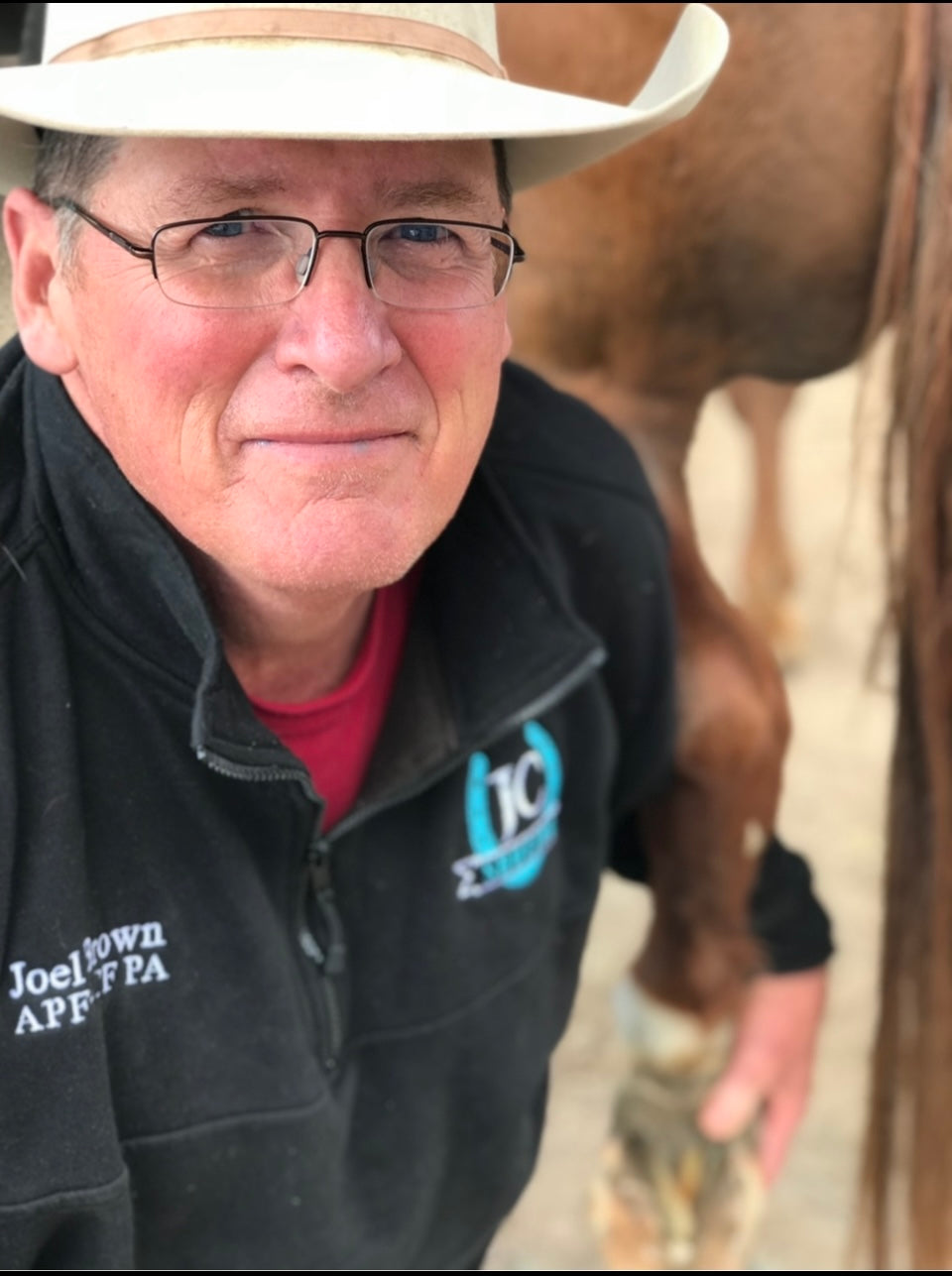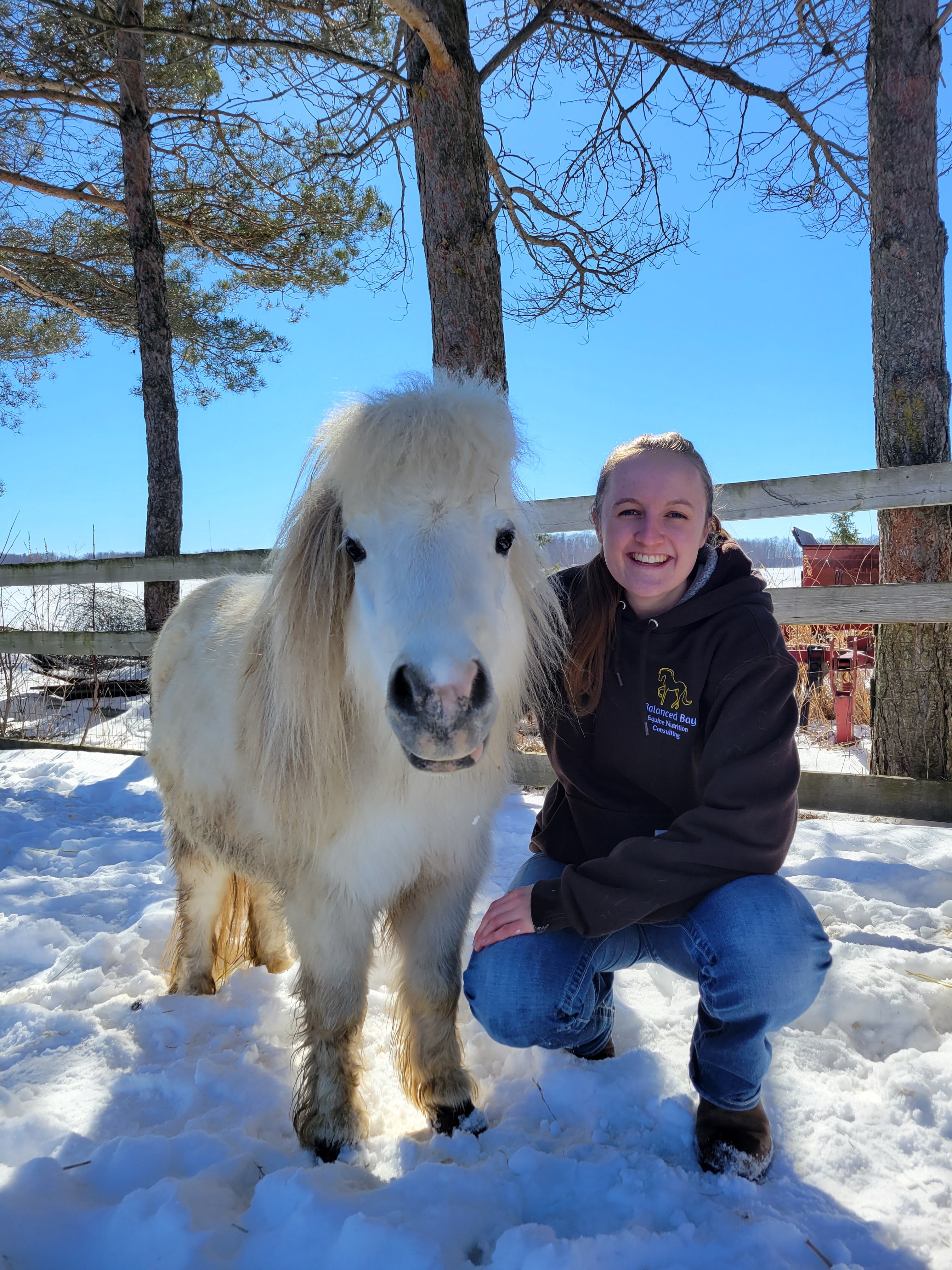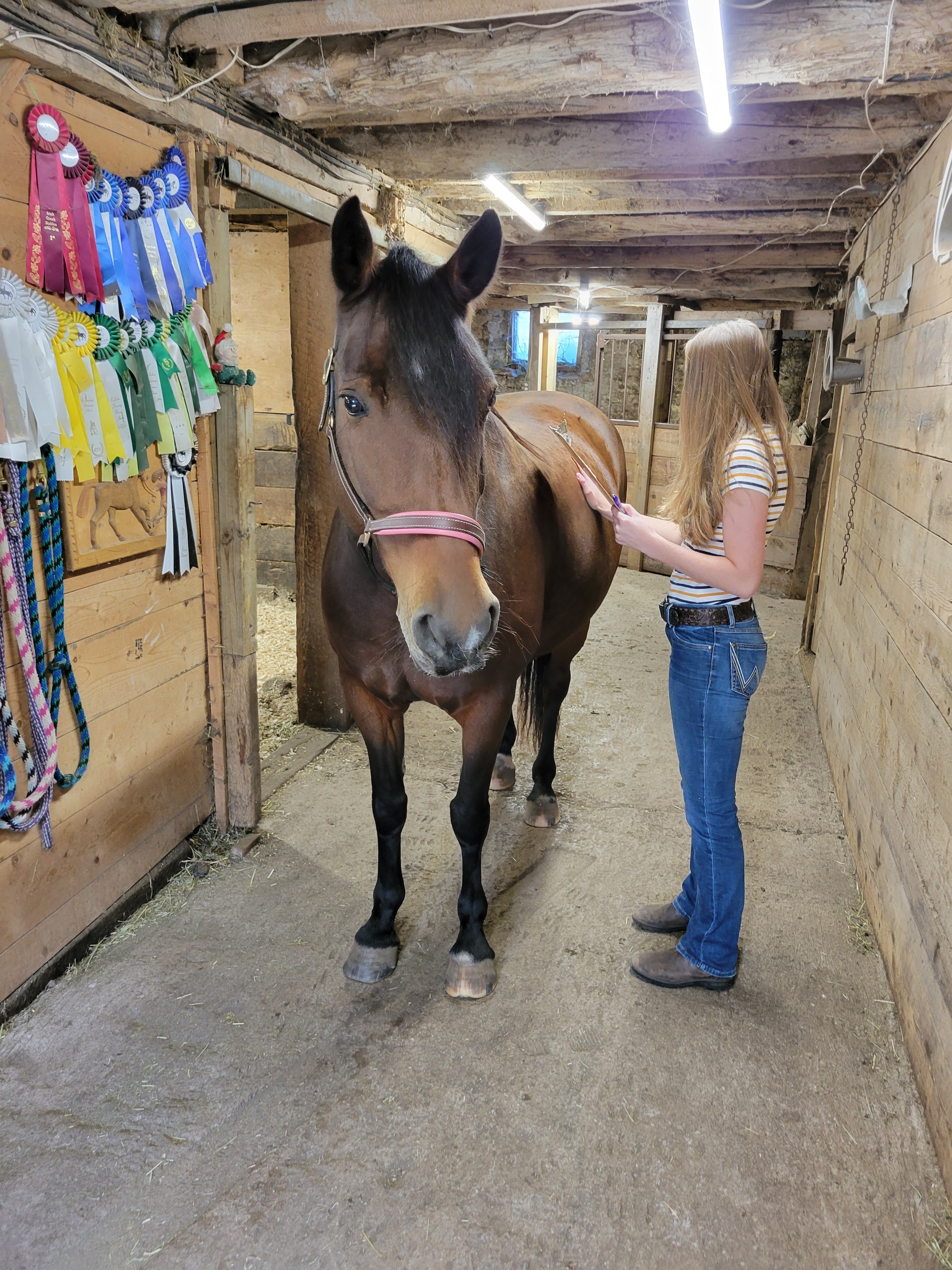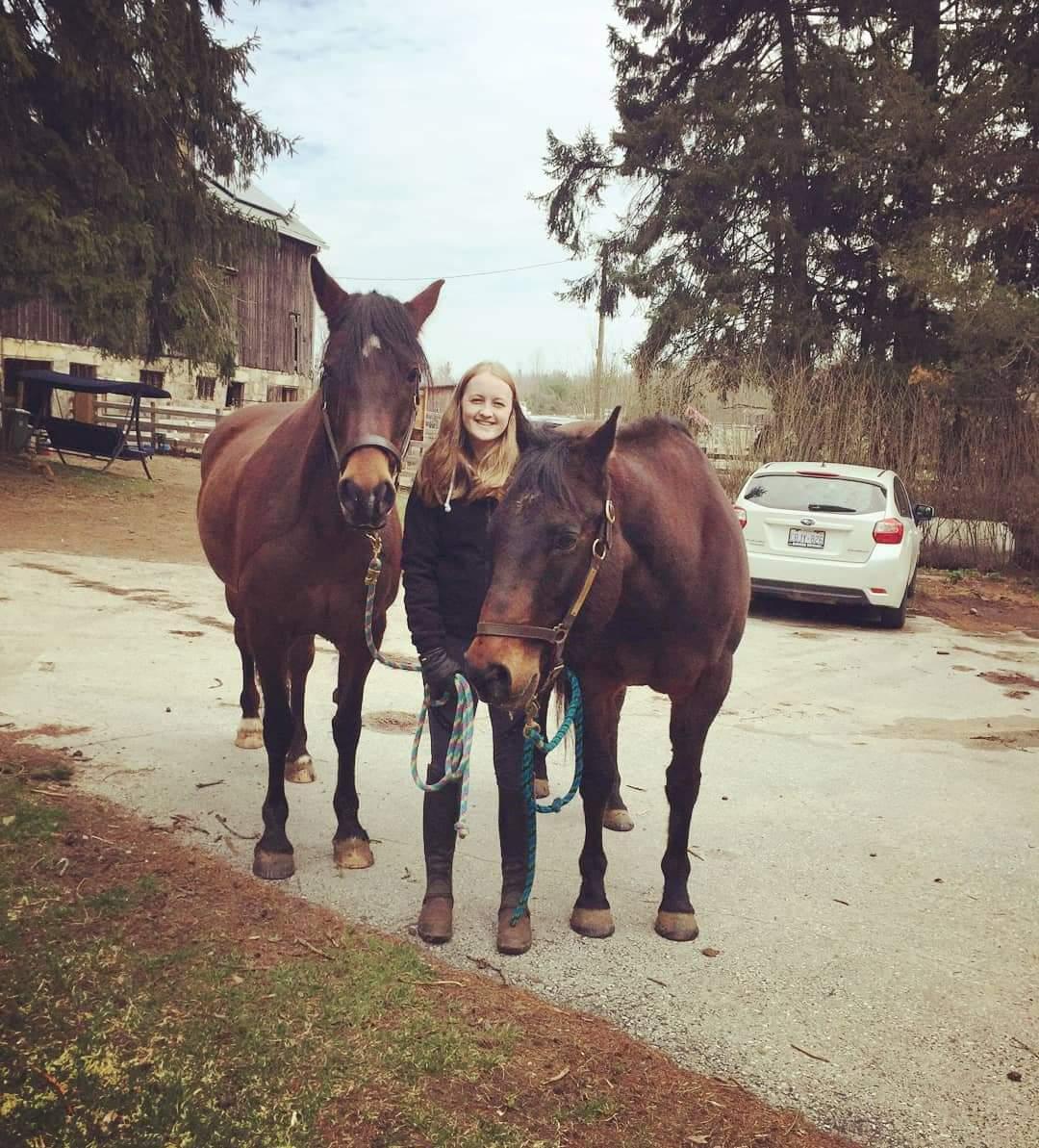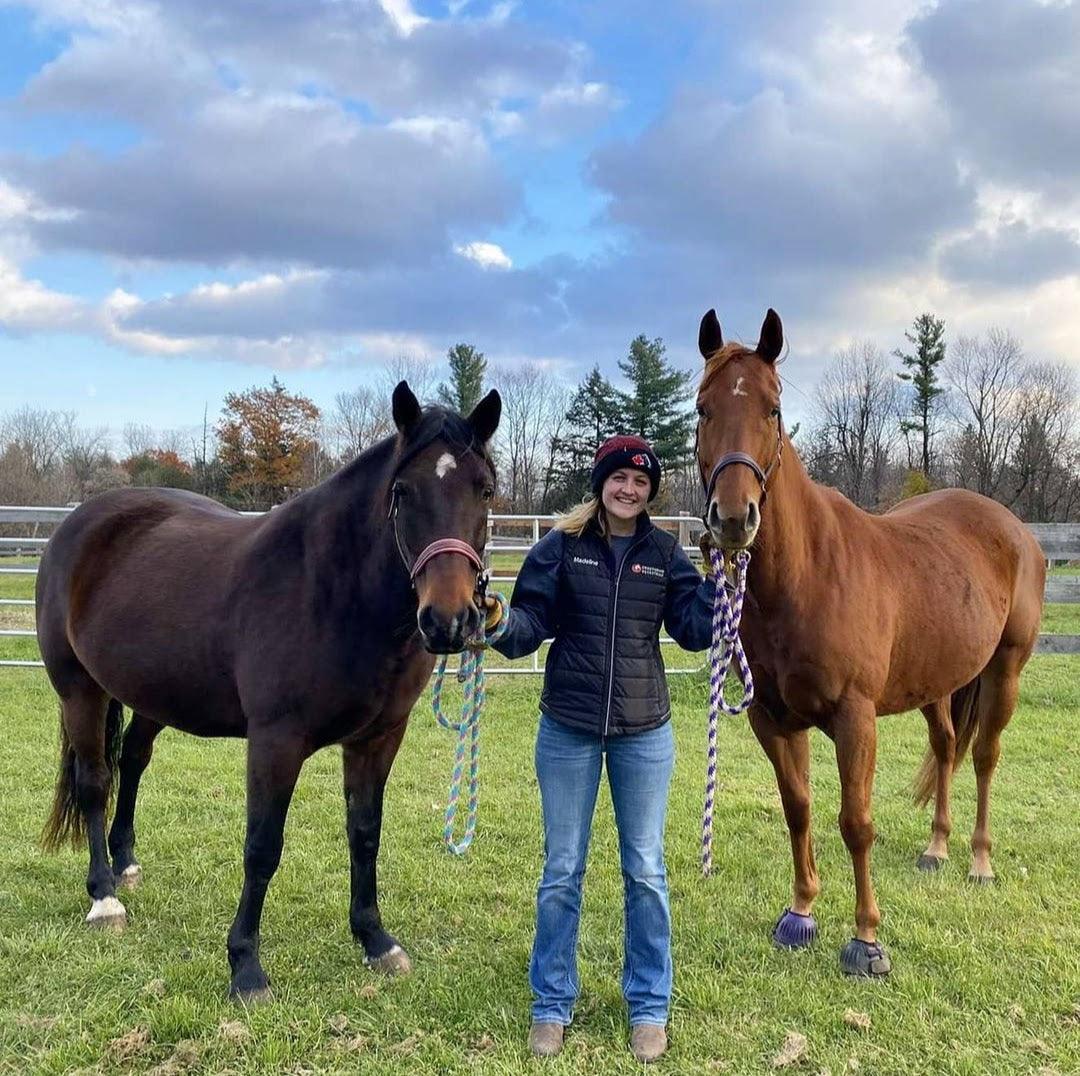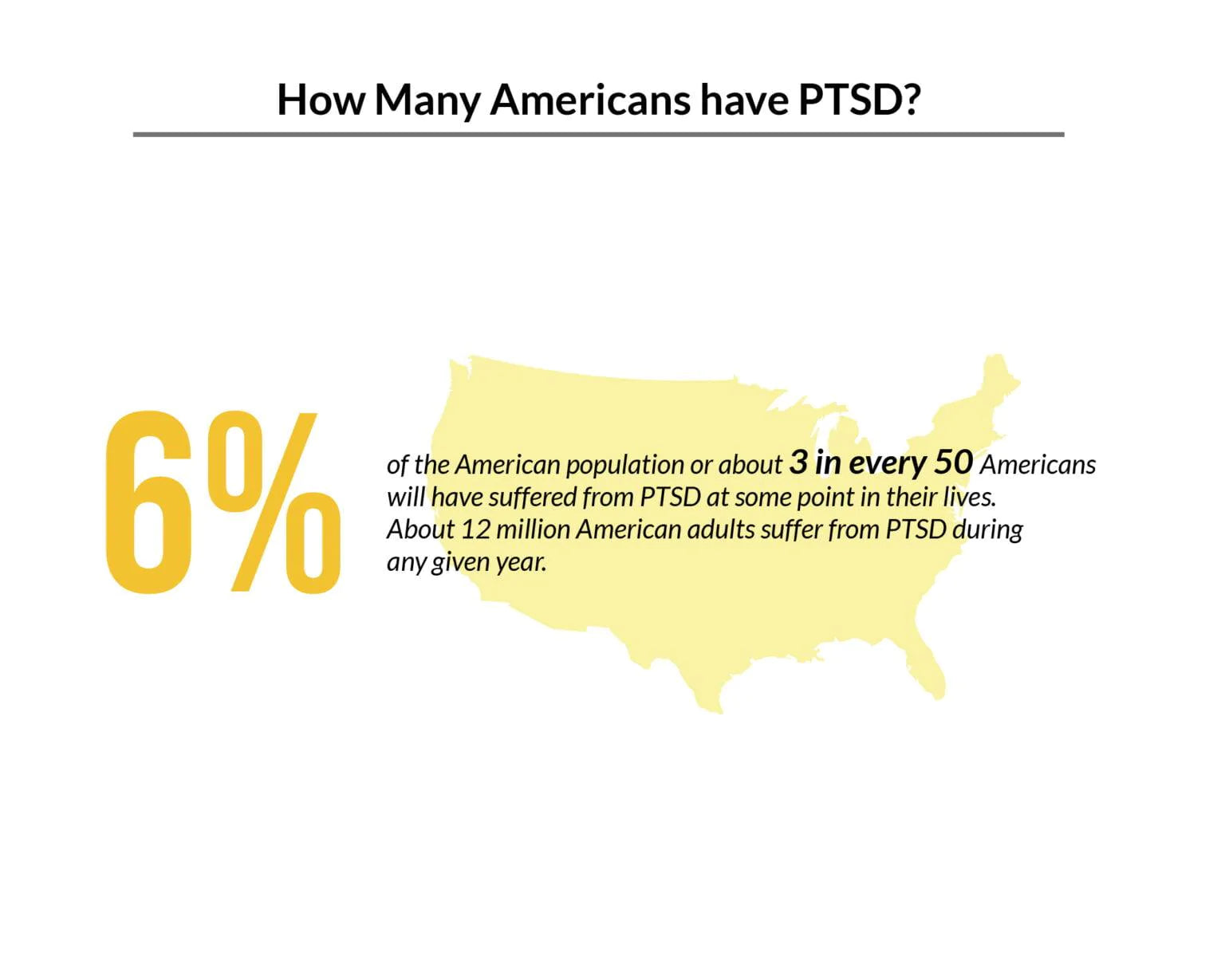
Invisible Illness | Steve McConnell | International Hoofcare Summit 2019
SEEING THE INVISIBLE ILLNESS:
By Allison Armstrong Rehnborg
For farrier Steve McConnell, the day his life changed started out just like any other day. One moment, the Waterford, Ontario native was absorbed in the ordinary task of fueling up his shoeing rig for the week; the next moment, he was drowning in a powerful vortex of emotions and memories he’d spent years trying to forget. Although he didn’t know it at the time, McConnell was suffering from post-traumatic stress disorder – an unwelcome souvenir from his years spent in military service as a young man, and one that was affecting his everyday life in ways he didn’t fully understand.
“I had no clue what was going on in my life until I was diagnosed,” McConnell says. “Once I started going to therapy and my therapist and I broke everything down, the best we could figure was that during one of the traumatic situations I experienced in the military, there was an overwhelming smell of diesel. I never thought about it and never had concerns about it until I got my diesel truck. The smell of filling that truck up once or twice a week began triggering my PTSD.”
Because PTSD affects everyone differently, it’s not always easy to tell when you have PTSD. Symptoms might not become apparent until months or even years after the traumatizing incident. In McConnell’s case, he was 18 years old when he experienced a traumatic event associated with diesel during his military service. He left the military at age 19, and by age 34, McConnell was working as a farrier when the smell of diesel began triggering symptoms of PTSD, including flashbacks, nightmares and an increased dependence on alcohol. After years of struggling with the disorder and using alcohol to numb his pain, McConnell finally came to terms with his PTSD by getting help – and now, he’s sharing his story in order to help others in the farrier industry who might be waging the same battle.
THE INVISIBLE ILLNESS
People who suffer with PTSD may feel like they’re grappling with an invisible illness, one that can be hard to recognize and even harder to acknowledge or admit to others. But ignoring a problem like PTSD doesn’t make it disappear. Just like a subsolar abscess or quarter crack in a hoof can’t improve without the right kind of care, people with PTSD need medical treatment to heal.
“If you think there’s something wrong, I guarantee you that there is, and you need to get help,” McConnell says. “You need to acknowledge your feelings concerning the event that happened to you. The sooner you talk about the event, the more likely that the effects on you are going to be minimized.”
Even taking one small step, like sharing your concerns with a trusted friend, can help get you started on the road to wellness. Harry Trosin, a behavioral health rehabilitation specialist from Tishomingo, OK, and a former farrier himself, recommends finding someone you can trust, whether that’s a therapist, a family member or a friend.
“I think it’s important to address mental health in the farrier industry, because we’re all pretty macho guys,” Trosin says. “There’s this concept that horse-shoers don’t seek counseling. We just tough it out and figure it out. Mental health is the last thing we want to talk about. But I think you need to find a close friend in the field that you can talk to about your problems. If that person is concerned about you, they’ll be able to tell you when you need to find someone more professional to deal with the problem and that you need help.”
IDENTIFYING POST-TRAUMATIC STRESS DISORDER
PTSD is a mental health issue that can result in people who have experienced or witnessed a life-threatening event. According to the U.S. Department of Veterans Affairs’ National Center for PTSD, which bases its statistics on the US population, about 7 or 8 out of every 100 people will develop PTSD at some point in their lives, and about 8 million adults have PTSD during a given year. Any critical incident, including combat, natural disasters, car accidents and sexual assault, can precipitate the development of PTSD. While veterans, active-duty soldiers and first responders are at the greatest risk of developing PTSD, anyone can develop the disorder at any age.
“Following a critical incident, no one is untouched by the event,” McConnell says. “Everyone that goes through an event like that will, in some way, shape or form, be changed by it. It’s normal to feel anxious after an event. Grief, anger, and sadness are normal reactions to a traumatic event.”
But when normal reactions become abnormal responses that cause great distress, last for months or begin to interfere with your everyday life, you might have PTSD.
“Individual reactions to PTSD can vary greatly,” McConnell says. “It’s a very individual process. People will have different reactions to a situation, and they’ll react to their memories in many different ways, too.”
The National Center for PTSD categorizes symptoms into four different general categories, but these symptoms can manifest in a variety of different ways.
- Re-experiencing symptoms. The first category includes flashbacks, nightmares and triggers. Many people find these symptoms especially hard to cope with because they are intense, emotional experiences. Flashbacks to the initial trauma can make you feel traumatized all over again. In McConnell’s case, encountering the smell of diesel served as a trigger that caused him to have nightmares and flashbacks to the incident that precipitated his PTSD.
“A lot of veterans don’t like people shooting off fireworks in their neighborhood because it upsets them,” McConnell explains. “Me, personally, that doesn’t bother me, but diesel still bothers me. It’s an individual thing. I spent quite a few nights alone, curled up in the fetal position in a corner at three o’clock in the morning, just because of the nightmares and different things I experienced.”
- Avoidance. The second category of symptoms is all about avoidance. People with PTSD from military experiences might avoid talking about combat, while people with PTSD from a car accident might refuse to drive. Avoiding reminders of the event is a way to avoid dealing with the problem itself as well as the pain and fear associated with it. Numbing behaviors can also fall into this category, and that’s where dependence on alcohol or drugs may come into play.
“We each have different ways of coping,” McConnell says. “Mine was alcohol. Some people work themselves to death. Each individual has different responses and different ways to cope.”
- Negative changes in beliefs and feelings. Withdrawing socially from others, avoiding intimacy, and struggling to trust other people are all symptoms of PTSD. Unfortunately, these symptoms can be compounded when the people in your life don’t understand what’s happening to you. Trosin says that people who suffer with PTSD often start isolating themselves from their families and friends, then feel even more alone when the people in their lives can’t understand what’s going on with them.
“Family and friends don’t understand the mood swings and the bad dreams, and they don’t understand what’s going on with their spouse or loved one who’s suffering from PTSD,” Trosin explains. “They also don’t understand why the person with PTSD can’t get past whatever has caused the trauma. And if friends and family don’t understand or empathize, it will compound the problem and the person with PTSD will withdraw even more.”
- Hyperarousal. Many people react to PTSD by becoming increasingly more irritable or lashing out in anger or rage. According to Jim Bremner, a Canadian author and law enforcement specialist, irrational bouts of anger can be a common reaction. Bremner developed PTSD after enduring several traumatic incidents in the course of his work as a police officer.
“People who are dealing with PTSD can become enraged over something that seems very simple,” Bremner says. “The pen falls off the desk, for example, and the person explodes.”
People with PTSD are also more likely to rely on substances, like drugs or alcohol, to cope with the disorder.
“Avoidance is one of the methods people use to cope, and numbing is the other one,” McConnell says. “There are different techniques of numbing: drinking, substance abuse, eating, starving yourself, gambling or becoming a workaholic. When I was working my day job and shoeing at the same time, I was probably working between 90 and 97 hours a week. I was probably getting 20 hours of sleep a week. I was a machine, and not in a good way.”
Bremner says that some people use dependency behaviors as a way to cope with emotions that they don’t understand. Like McConnell, Bremner also developed a dependency on alcohol during his struggles with PTSD. After suffering with his disorder and addiction for many years, Bremner found help and now works with individuals and groups to help other law enforcement officers and first responders with PTSD.
“There’s usually a dependency with PTSD,” Bremner confirms. “It might be a dependency on alcohol, drugs, eating or gambling. There will be one of those maladies there because people are trying to compensate through self-medication to get through those very stressful times of panic attacks, when their heart is beating so fast and they’re sweating and crying in the middle of the day. They’re just trying to get themselves through all this, so they self-medicate.”
GETTING HELP
If you think you have PTSD, the first thing you should do is visit your doctor for a diagnosis. After diagnosis, your doctor might prescribe therapy, medication, or both. If you’re struggling with an alcohol or drug dependency, your doctor can also help you find treatment for addiction so that you can start the recovery process.
“What I’ve found is there are a lot of different avenues you can go to for help, but if one doesn’t work for you, you need to keep trying until you find the right one,” McConnell says. “I think what happens is that people sometimes reach out to an organization or try a type of therapy and then they don’t give it enough time to work, and they don’t want to try again. But you have to keep trying.”
Trauma-focused psychotherapies are some of the most effective treatments for PTSD, according to the National Center for PTSD. Cognitive processing therapy teaches you techniques for thinking about your trauma and handling your emotions, while prolonged exposure therapy involves helping you to talk about your trauma until you’re able to discuss it without feeling upset.
In addition to therapy, some people might see a behavioral rehabilitation specialist like Harry Trosin. Trosin provides people with strategies for solving their behavioral health issues, including anger management and parenting techniques. While it might be hard to trust a therapist or a counselor, Trosin says that therapy is a safe place to talk about whatever might be bothering you.
“So many people have trust issues, but it’s important to learn to trust,” Trosin says. “That’s why when you go to a counselor, for example, the first thing we tell someone is that we can’t tell anyone anything you tell us without your permission, unless you are going to harm yourself or someone else. We won’t judge you and we won’t get angry with you.”
FINDING HOPE WITH PTSD
PTSD is often referred to as “the hidden wound,” not only because it isn’t always outwardly apparent, but because people hesitate to talk about mental health for fear of being punished, losing their jobs or losing the respect of loved ones or coworkers. According to Bremner, this fear is part of a stigma that needs to end.
“We have to stop seeing mental illness as something from medieval times,” Bremner says. “It’s confusing to me as to why, with a physical injury, we’ll go to great lengths to get that solved as rapidly as possible, but that same model can’t seem to be applied to someone who suffers with mental illness. I think that’s a stigma problem that’s probably bigger than the iceberg that sank the Titanic.”
For McConnell, being open about his struggles with PTSD and alcohol hasn’t been easy – but it’s become a necessary part of how he continues to heal and recover.
“I’m open about my PTSD and my past addictions,” McConnell says. “Someone asked me the other day, ‘Why even talk about it? What if someone tells your customers?’ And I said, ‘I don’t care. I probably told them anyway.’ I don’t advertise it, but if it comes up in conversation, I’m not afraid to talk about my PTSD. It’s part of who I am.”
Working with horses as a farrier has also been an essential part of McConnell’s healing process.
“The horses have been a saving grace for me because they’re innocent,” McConnell says. “I honestly think that being a farrier probably played the biggest role in my recovery. I go see every horse knowing that I’m going to help it in some small way at least, and you can’t not feel good about yourself when you think about it that way. Everywhere I go, I try to make things just a little bit brighter. And if I could convey any kind of message to someone who’s struggling, I’d just say, sit back and look at yourself in the mirror and ask, ‘What is it about you that could make you brighter?’ Not necessarily better, not different, just brighter. And if you don’t love who’s looking back at you, then help yourself.”
THREE FARRIER TAKEAWAYS
- Post-traumatic stress disorder, or PTSD, affects millions of people each year. Anyone can develop the disorder at any age. If you’ve experienced a life-threatening event and struggle with flashbacks, nightmares, intense irritability, addictions or other problems, you could have PTSD and not realize it.
- Working with a therapist or counselor can help you learn healthy ways to cope with your PTSD symptoms and start on your road to wellness.
- If you think you need help and you don’t know how to get it, reach out to a family member, a trusted friend or your family doctor. You are not alone.
Reference: https://www.americanfarriers.com/articles/11529-seeing-the-invisible-illness?v=preview
Photo: https://cfah.org/ptsd-statistics/
